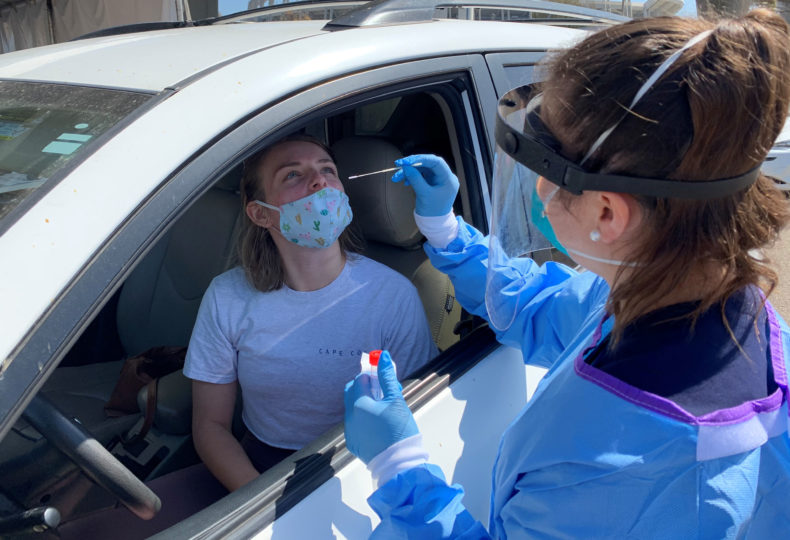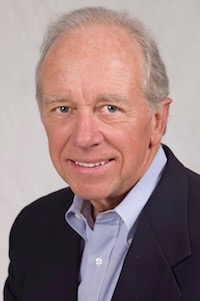Daily Business Report-Dec. 24, 2020
Image via iStock
Commentary: California small business grant program
is right thinking, but flawed in its execution
By Pauline Gonzalez-Brito and Tate Hill | Special to CalMatters
Small businesses owned by Black, Indigenous and People of Color are being disproportionately crushed by the weight of the pandemic – and many aren’t positioned to survive the next few months.
So, when Gov. Gavin Newsom announced $500 million in grant funding and a temporary tax relief package for small businesses last month, it seemed like a sign of hope. And while we agree that any aid at this moment is a step in the right direction, a closer look reveals a plan that is too simplistic, flawed and ignores many crucial considerations needed to help BIPOC-owned and rural small businesses access these grants.
In his announcement, Newsom cited data from the Census Current Population Surveywhich found active businesses owned by Black, Latinx, Asians and immigrants dropped by 41%, 32%, 25% and 36%, respectively. The good news here: Newsom acknowledges that these businesses are struggling far more than small businesses owned by non-BIPOC people. The bad news: the plan doesn’t do enough to prevent further drop-off.
If Newsom wants to provide a lifeline for the most underserved small businesses, he urgently needs to reimagine his approach to avoid a situation similar to the distribution of Paycheck Protection Program loans earlier this year, where Black-owned small businesses received just 2% of the loans and Latinx-owned small businesses received only 6%. This reimagining has to begin and end with distributing grants first to microenterprises, small businesses with the lowest annual revenues and small businesses that were left out of the PPP loan program.
Here are additional protections that need to be implemented in this relief package to better serve BIPOC-owned and rural small businesses:
First, community development financial institutions and other community-based organizations must be involved. These are organizations that can perform outreach to rural areas, indigenous communities and communities where economic infrastructure is lacking due to historical disinvestment and exclusion by financial institutions. They ensure small businesses can fill out applications, navigate systems and assist with the collection of required documents. More than one-third of small businesses needed support in applying for PPP loans, according to our data. The same will be true for this grant program.
Second, adjust the application process. The application needs to be made available in the five most commonly spoken languages in the state and designed so that it is accessible for small businesses that are not technologically well-equipped. Many small businesses, especially those in rural parts of the state like Fresno, Stanislaus and Kern counties, may not have stable internet connections, access to computers or smartphones. Online-only documentation fails to level the playing field for small businesses.
Third, establish a selection lottery in which grant applicants who fit multiple attributes of being in an underserved group and operate in low-income communities have a higher grant award rate than applicants who fit fewer attributes.
Fourth, small businesses that require extra assistance to navigate the grant process need more time to ensure they get adequate support. Specifically, rural, tribal, microenterprises, small businesses that have not received PPP loans, and other underserved small businesses.
Lastly, race, ethnicity and detailed geographic data needs to be collected, made public and reported regularly. Taxpayers have a right to know that these funds were used to support the most disadvantaged and historically excluded small businesses, rather than small businesses that have the resources to jump to the front of the line.
____________________________________________________

MERRY CHRISTMAS EVERYONE!
The Daily Business Report will not be published tomorrow, but will resume on Monday.
____________________________________________________

Newsom’s two big picks make history for California
by advancing Latino and Black Democrats
CalMatters
In choosing a new U.S. senator and a new secretary of state, Gov. Gavin Newsom could shape Democratic politics for years to come.
In a strange and tumultuous year, 2020 delivered this paradox for Gov. Gavin Newsom: As Californians endured enormous suffering amid devastating wildfires and a deadly pandemic, their governor accumulated an unusual trove of power to shape Democratic politics for years to come.
Newsom filled two major positions Tuesday — naming Secretary of State Alex Padilla to the U.S. Senate seat held by Vice President-elect Kamala Harris, and tapping Assembly member Shirley Weberof San Diego to replace Padilla as California’s top elections official. The governor will likely fill one more elected office early next year, naming an attorney general to replace Xavier Becerra, whom President-elect Joe Biden has nominated to his cabinet.
It’s a spate of political christenings California hasn’t seen in nearly 70 years. Not since Gov. Earl Warren made three major appointments over several weeks in December 1952 and January 1953 has a governor named so many people to such heights of power in such a short period of time, said California historian Alex Vassar.
“It’s a tremendous amount of power to, through fiat, be able to turn the page on generational leadership within the Democrat party, and therefore California,” said GOP political consultant Rob Stutzman.
____________________________________________________
County boosts ability to staff emergency shelters
The San Diego County Office of Emergency Services (OES) has significantly improved the ability to open and maintain emergency shelters and local assistance centers in the county by increasing their number of qualified shelter workers and managers by 67 percent as of Dec. 1, according to officials.
Despite the constant threat of wildfires and additional COVID-19 social distancing requirements creating an increased demand for shelters and thus shelter workers, OES has managed to increase the number of county employees who are qualified to work at and manage emergency shelters from 420 to 702 personnel in 2020.
“While the American Red Cross serves as our primary source for providing emergency shelter during an emergency, this increase in qualified personnel to our County Shelter Team program helps to improve our rapid response capabilities,” said Jeff Toney, San Diego County OES director. “This large increase in qualified personnel will allow us to be better prepared to open and operate additional facilities when the demand exceeds the resources provided by the Red Cross.”
____________________________________________________
ALS Association announces $25,000
year-end matching donation challenge
The ALS Association Greater San Diego Chapter has announced a year-end, matching donation challenge that’s part of a $25,000 donation from Rick Greenberg, a retired San Diego sports medicine physician. Because of Greenberg’s donation, every dollar donated to the ALS Association Greater San Diego Chapter until Dec. 31, 2020, will be matched dollar-for-dollar up to $25,000, according to Steve Becvar, ALS Association executive director.
Greenberg said his donation is in honor of his identical twin brother David, who was diagnosed with ALS in 2014 and passed away Dec. 7, 2016. He was 69. David had a 30-year career as a general-practice family physician. “I’m willing to do whatever I can in David’s name to continue the great work of the ALS Association and to eliminate this devastating disease,” said Greenberg, 73. “ALS doesn’t just affect the patients who have the disease, but it also equally impacts all the family members.”
Year-end donations can be made online at www.alsasd.org, or mailed to 9929 Hibert St., Suite A, San Diego, 92131. For more information on the December matching challenge, contact Melissa McElvain, mmelvain@alsasd.org or call (858) 271-5547 or (619) 954-2823.
____________________________________________________

Free COVID-19 testing available over holidays
Free COVID-19 testing will continue to be offered seven days a week by the County throughout the holidays, with fewer locations and shorter hours on certain days.
On Dec. 24 and Jan. 31, sites will operate on a regular schedule, with each closing at 4 p.m.
On Dec. 25, three sites – University of San Diego, San Marcos and Southeastern San Diego – will be open from 10:30 a.m. to 2:30 p.m.
On Jan. 1, five sites – Tubman Chavez Community Center, Lemon Grove, the University of San Diego site in Linda Vista, Imperial Beach and Vista – will be open from 10 a.m. to 5:30 p.m.
Walk-in testing sites do not require appointments. However, as of Dec. 20, nearly all drive-up COVID-19 testing sites have become appointment-only locations. This change is in response to safety concerns caused by traffic backups. Appointments are accepted up to three days in advance with new appointments becoming available each day about noon.
For details on testing locations, or to make an appointment at a drive-up location, visit 211sandiego.org or call 2-1-1.
____________________________________________________
Robert Jones named interim
director of Episcopal Community Services

Episcopal Community Services (ECS) has named Robert Jones as Interim CEO. The current CEO, Leslie Keller, will be retiring after 13 years in early January 2021.
Jones brings with him more than 30 years of experience in human resources, executive coaching, recruiting, and training.
Throughout his career, Jones has held senior-level human resources positions with large and small companies. His experience ranges from Fortune 100 companies to startups in various industries, including food manufacturing, restaurants, and biotechnology.
Jones served as director of human resources for ECS from 2012 until his retirement in 2017.
Jones received both a bachelor’s degree in education and a Masters of Personnel Administration from Ball State University in Muncie, Ind. He has served as a board member of San Diego Junior Achievement and has supported youth in a variety of ways throughout his career. Jones served on the board of the San Diego Rescue Mission for seven years; the last two as board president.
____________________________________________________

Green revolution saved over 100 million
infant lives in developing world
New research from the University of California San Diego shows that since modern crop varieties were introduced in the developing world starting in 1961, they have substantially reduced infant mortality, especially for male babies and among poor households.
The study assessed mortality rates of more 600,000 children across 37 developing countries, revealing global diffusion of agricultural technology reduced infant mortality by up to 2.4 to 5.3 percentage points. This translates to around 3 to 6 million infant deaths averted per year by the year 2000.
The global scale of the study—the most sweeping to measure the green revolution’s impact on child health—is critical because while the green revolutions represents one of the most important technological transformations in modern history, it did not reach all parts of the world equally.
“If the green revolution had spread to sub-Saharan Africa like it did to South Asia, our estimates imply that infant mortality rates would improve by 31 percent,” said Gordon McCord, study co-author and associate teaching professor of economics at UC San Diego’s School of Global Policy and Strategy.
____________________________________________________

Experimental vaccine can counter dangerous
effects of synthetic cannabinoids
Made in clandestine laboratories and sold widely across the United States, the diverse class of drugs known as synthetic cannabinoids presents a growing public health threat. In a new study, Scripps Research scientists have devised a way to deactivate these designer drugs after they’ve been administered—offering a potential path for treating addiction and overdose.
The research appears in the American Chemical Society’s open access journal JACS Au, with findings from the laboratory of Kim Janda, professor of chemistry at Scripps Research. Janda and his team developed a vaccine that was able to broadly counter the effects of synthetic cannabinoids in rodents, sequestering the drug molecules before they could interact with the central nervous system. Importantly, the approach worked in models that simulated smoking and vaping, which is how the drugs are most commonly used in real life.
____________________________________________________
SANDAG to reinstate State Route 125 toll violations
The SANDAG Board of Directors approved the reinstatement of SR 125 toll violations starting Jan. 5, 2021. In response to the COVID-19 pandemic and the resulting economic impacts, the board approved waiving all toll violations on the South Bay Expressway in April 2020, including the practice of placing vehicle registration holds for non-payment of violations. FasTrak monthly maintenance fees were also suspended.
As the reinstatement of toll violations begins, SANDAG will offer three temporary relief measures.
- The FasTrak account maintenance fee requiring minimum monthly toll usage will continue to be waived.
- The timeframe to use Pay-by-Plate to pay a toll before receiving a violation will extend from the standard four-day period to 10 days.
- The timeframe to pay a violation will extend from 30 days to 60 days
“The long-range goal is to eliminate the tolls a hundred percent,” said Chula Vista Mayor Mary Salas. “But we have to do it in a way that we meet our obligations to pay down the debt service…and with the suspension of violations, that’s getting harder and harder to do.”


